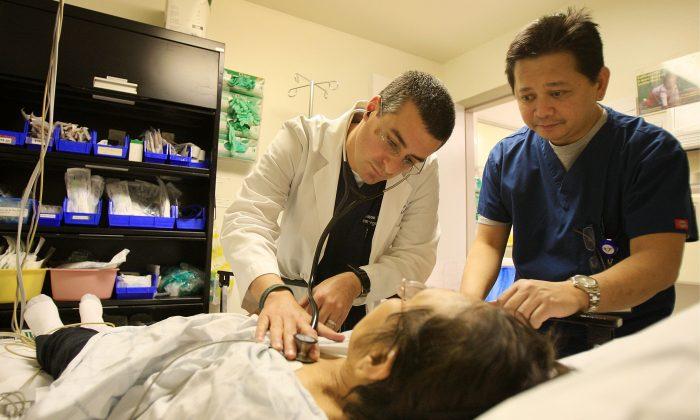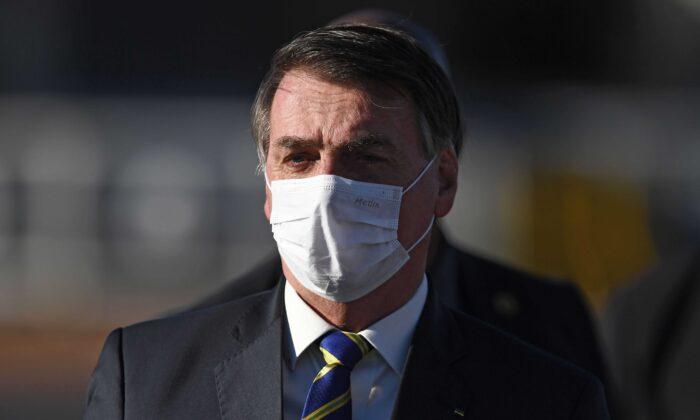A doctor shortage in California has prompted the state to take action, including paying off school loans for doctors, but some believe the fixes will do little to address the underlying problems.
In addition, on Aug. 6, the California State Auditor
released a report that found the state Department of Health Care Services has not ensured an acceptable level of care for some Medi-Cal beneficiaries, who were forced to “travel excessive distances to receive care.”
After the Affordable Care Act was signed into law in 2010, more than four million new people joined the state’s Medi-Cal program,
according to CalMatters, increasing the pressure on California’s health care system.
A 2017 study by the University of California, San Francisco (UCSF), found that most regions in California had less than the recommended 60 primary care doctors per 100,000 residents, reported the California Health Care Foundation.
“Experts estimate that by 2030, California will need an extra 10,500 primary care providers to effectively treat its population,”
stated the foundation.
The percentage of doctors willing to treat Medi-Cal patients has also dropped. A
voluntary survey by the California Health Care Foundation found physicians who participated in Medi-Cal fell from 69 percent in 2013 to 63 percent in 2015.
To help boost these numbers, the state is testing out a new program to fund student loans.
California officials are offering 247 physicians and dentists help to pay off their medical school loans if they dedicate at least 30 percent of their caseloads to Medi-Cal patients for five years.
Medi-Cal offers medical coverage to California’s low-income population,
covering 40 percent of the state’s children, 50 percent of Californians with disabilities, and more than half of all births in the state.
California is also
expanding its Medi-Cal coverage to tens of thousands of illegal immigrants under the age of 26, according to the state’s 2020 budget. Officials estimate it will cost around $100 million to provide 90,000 undocumented individuals full coverage in the first year alone.
Despite the costs, health advocates celebrated the move, while suggesting that the state legislature didn’t go far enough.
“We are pleased that Medi-Cal coverage will expand to not just all income-eligible children but young adults, regardless of immigration status, but disappointed we couldn’t make that same commitment to seniors this year,” said Anthony Wright, executive director of the health-care consumer advocacy coalition Health Access California,
in a statement.
Political science professor at Claremont McKenna College in California Jack Pitney
told CNBC that while President Donald Trump would see the move as “an invitation for more undocumented immigrants to cross the border,” criticism would have little to no effect in the state, “where there’s a great deal of sympathy for undocumented immigrants.”
In an email interview with The Epoch Times, Dr. Gilbert Berdine, an associate professor of internal medicine at the Texas Tech University Health Sciences Center (TTUHSC) and a faculty affiliate with the Free Market Institute, claimed that California isn’t trying to fix the doctor shortage problem. In fact, he said, “California created the current [crisis].”
“There is no such thing as ‘free’ health care,” Berdine said when talking about the swelling numbers of Medi-Cal patients.
“Providers expect to get paid by someone. In a market economy, doctors would compete for patients by offering lower prices and better service. In the existing health care economy, patients compete for scarce providers by waiting in lines, traveling long distances, etc. A subsidy system which expands the number eligible for ‘free’ care causes longer wait times and other inconveniences for the patients who previously were paying for health care,” he said.
Meanwhile, doctors and dentists who have benefitted from the new program say they’re thankful to California for the opportunity.
Bryan Ruiz, a dentist who’s $300,000 in the red thanks to his medical loans,
told The Los Angeles Times that having his loan paid by the state was a “life-changing” experience.
“The loan repaying program is huge,” said Sandra R. Hernández, a physician and president of the California Health Care Foundation, to the news outlet. “You have a lot of young physicians who graduate from medical school with tremendous debt.”




